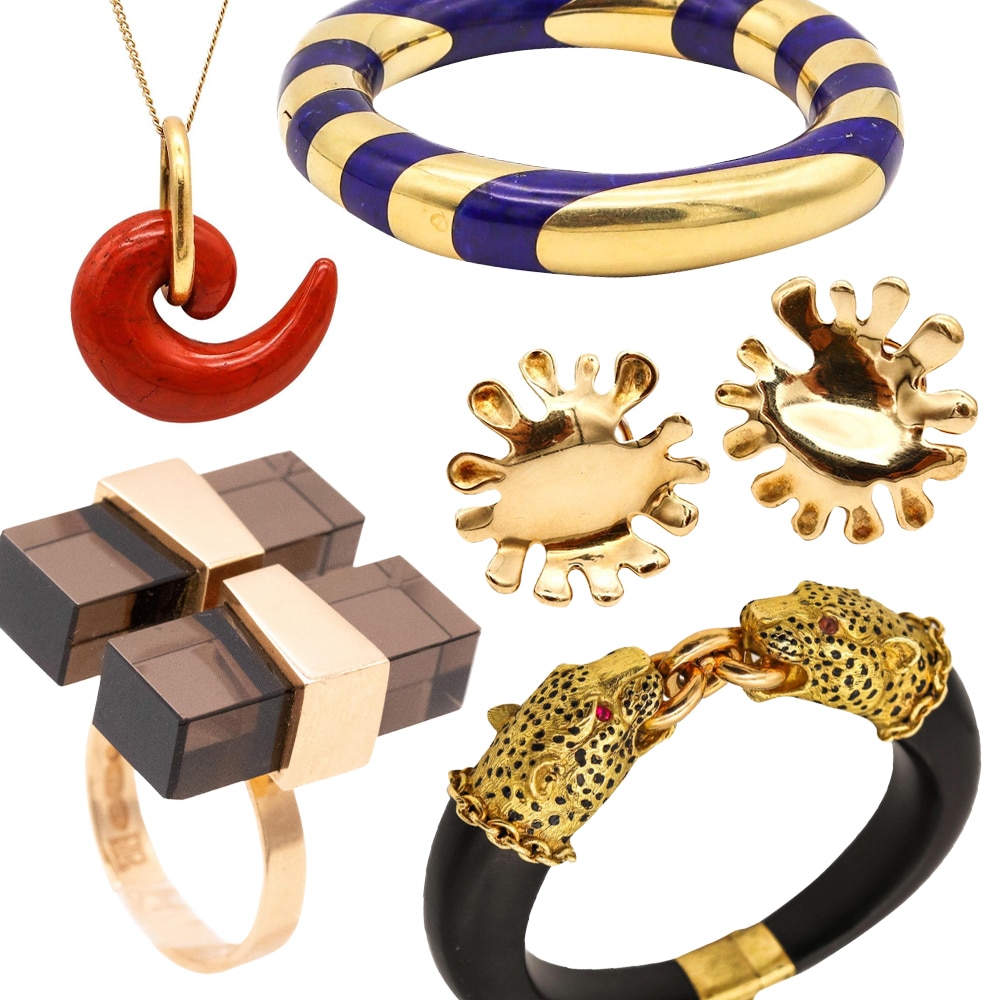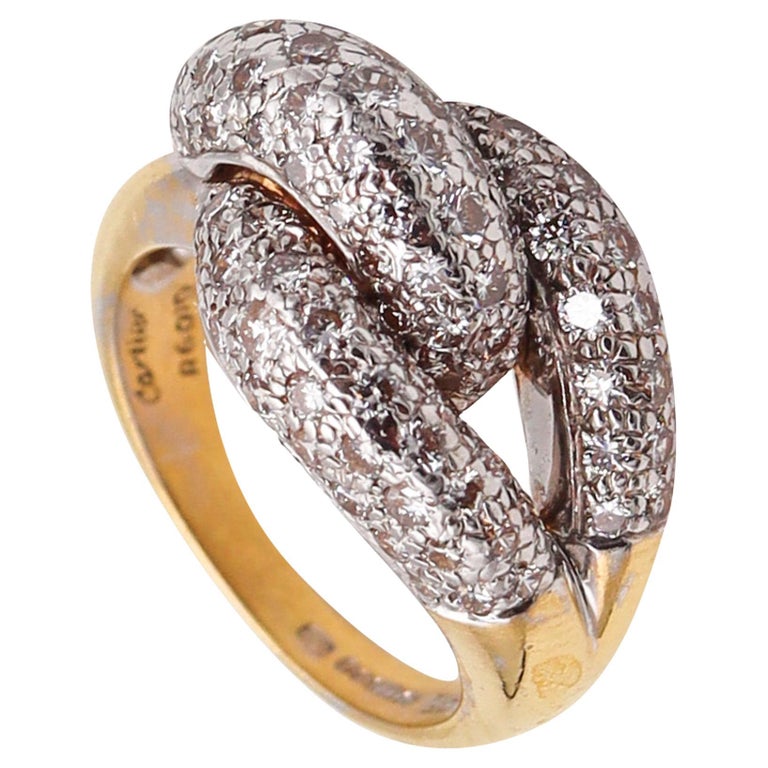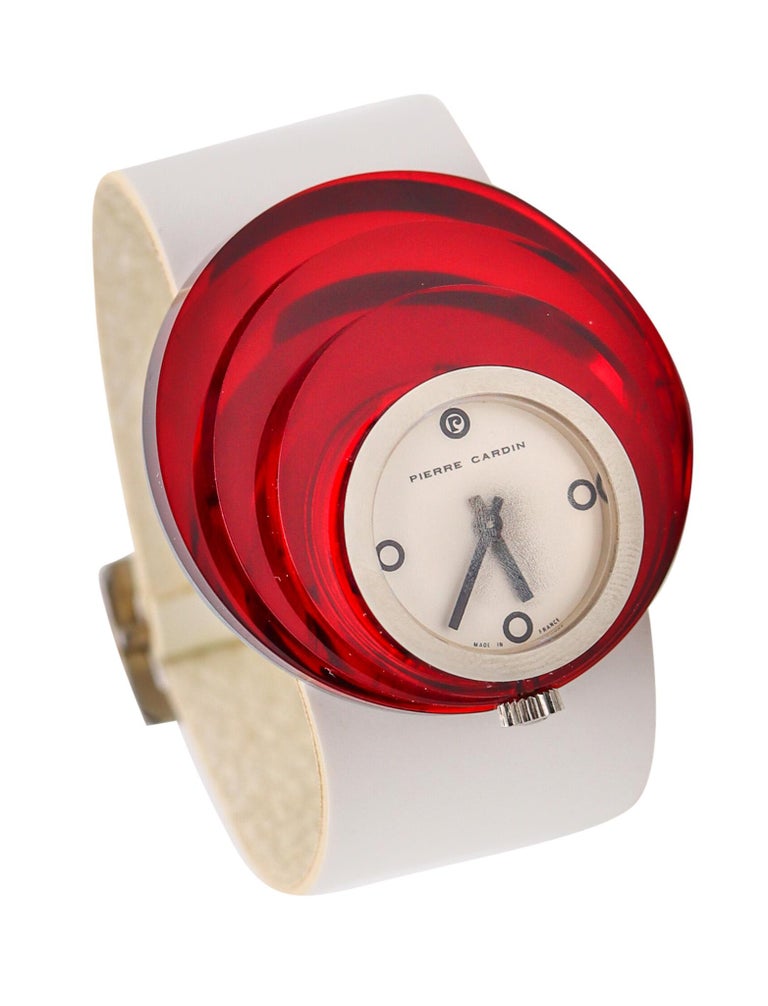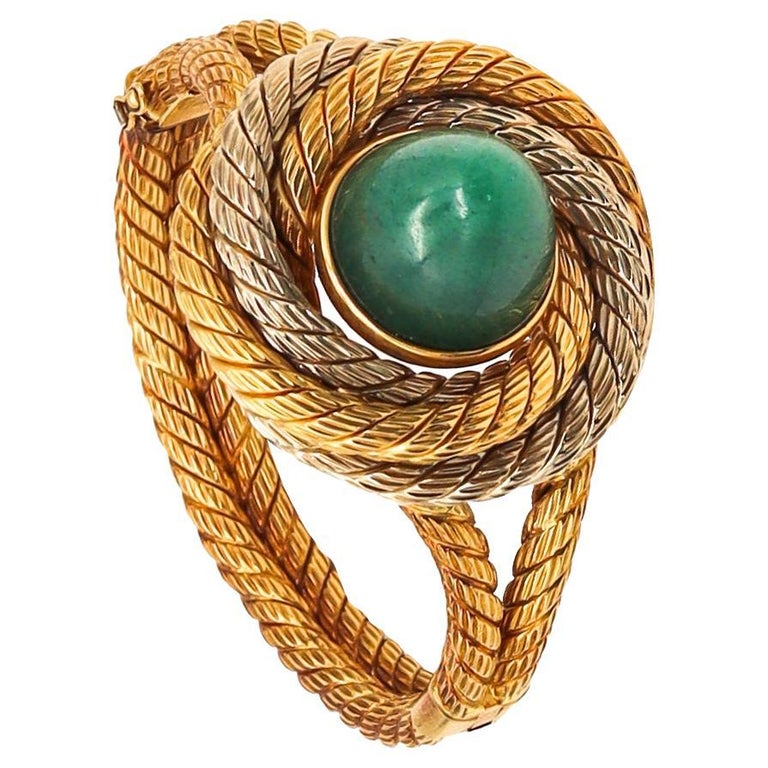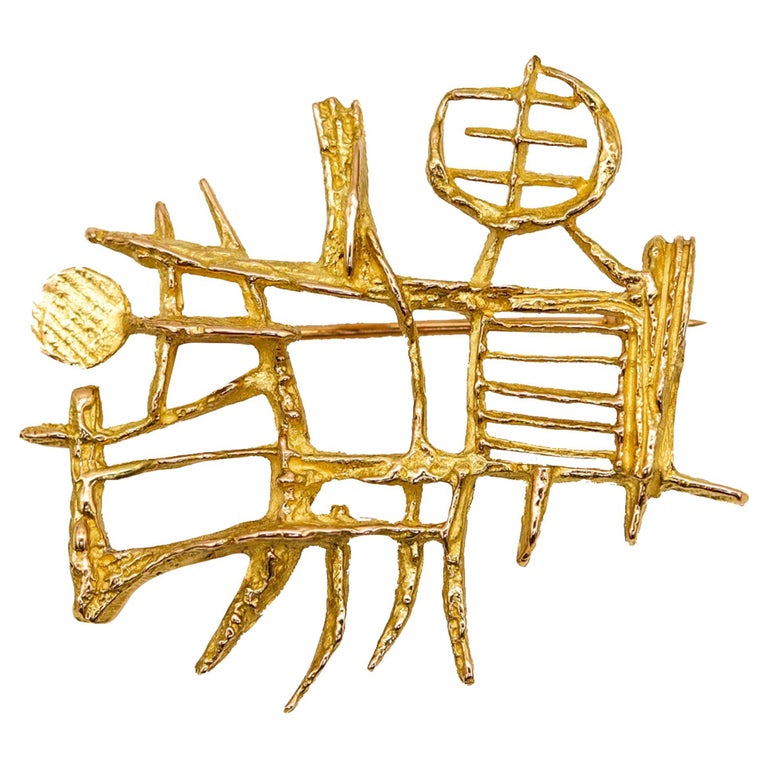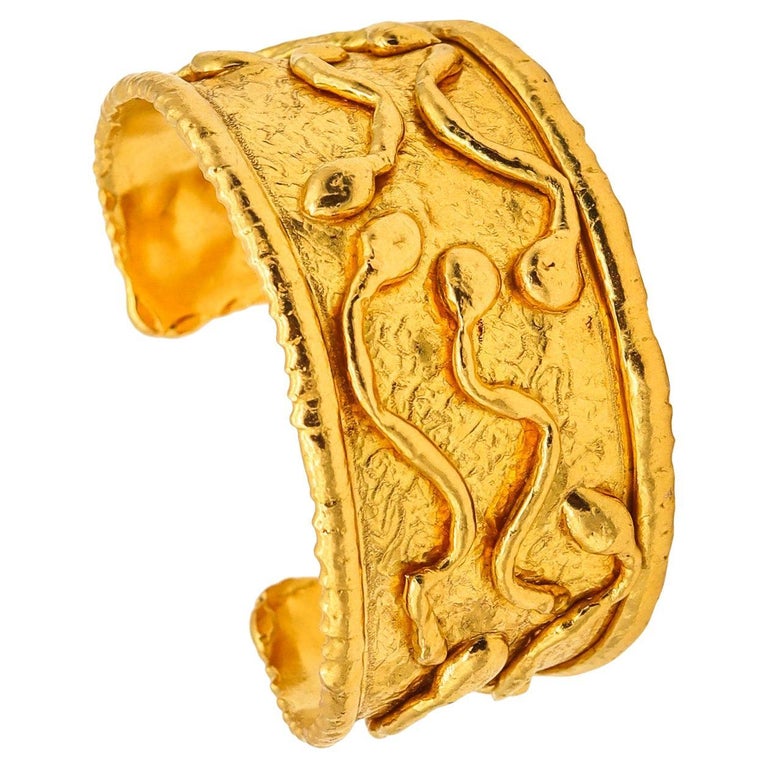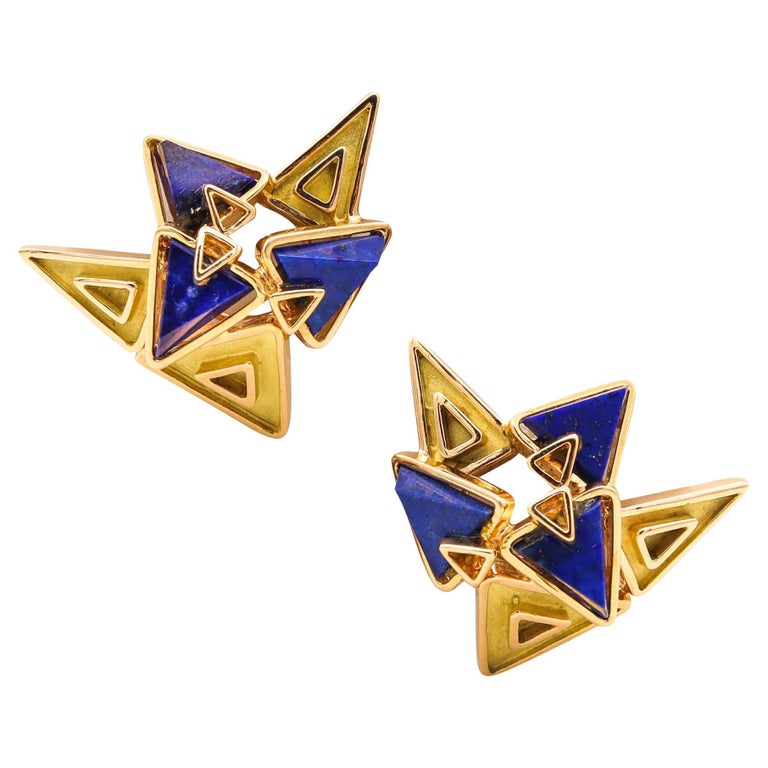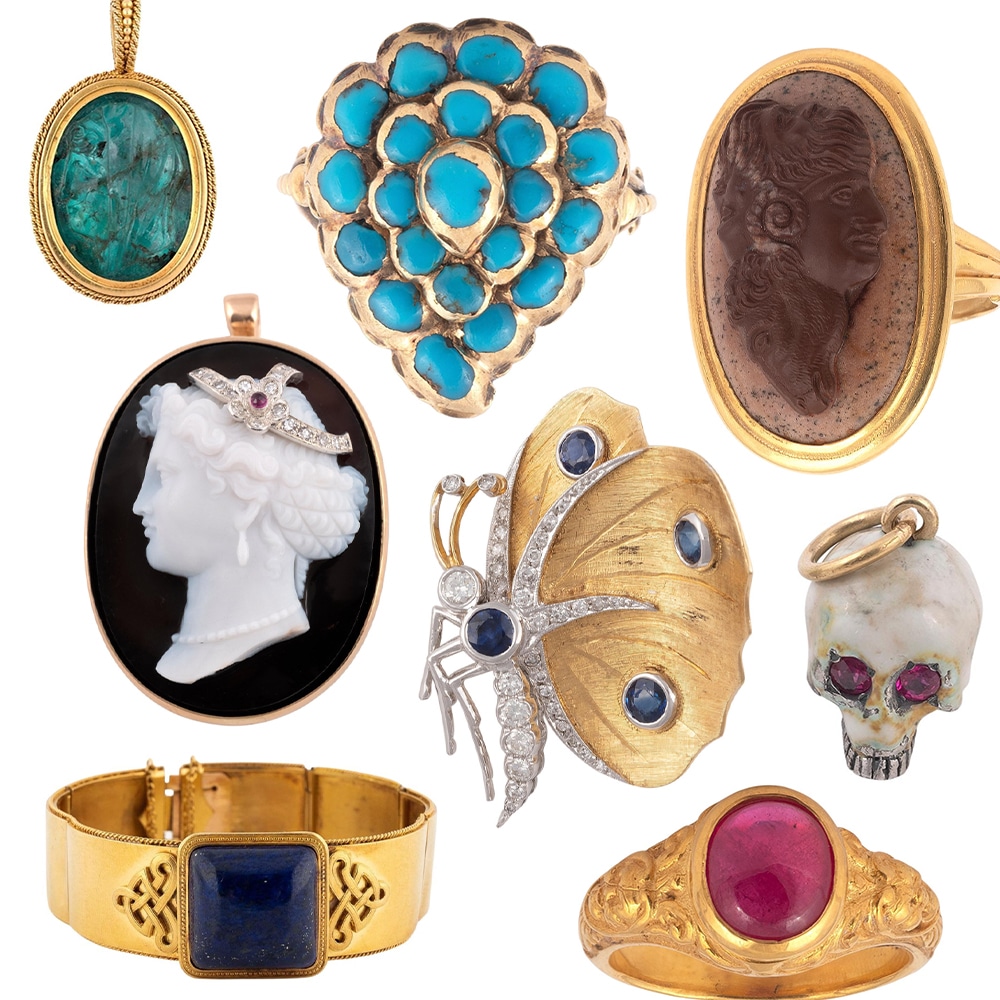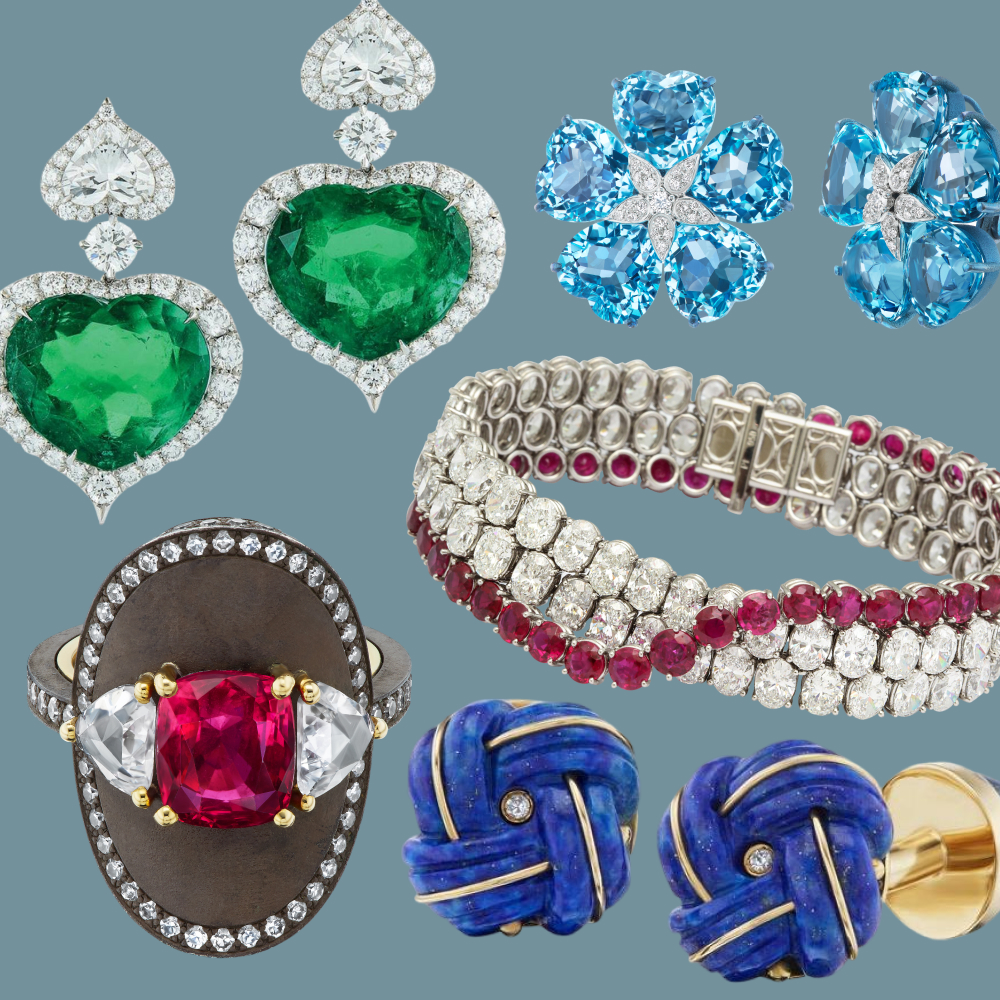June 11, 2023Survey the collections of some estate jewelers and what might stand out are the high-quality gems, the marquee maisons and makers represented or the firms’ clear affinity for certain design eras. In the case of Miami-based Treasure Fine Jewelry, all three are evident in its broad and impressive assortment. But a strong, specific and deeply felt aesthetic also shines through: modernist, architectural and heavily slanted toward an inimitable European chic.


All the best brands are accounted for — Cartier, Boucheron, Bulgari and Van Cleef & Arpels, to name a few — but they rub shoulders with names you might not know, like Gay Frères, Fawaz Gruosi, Carlo Weingrill, Kaunis Koru and Pierino Frascarolo. The pieces by these lesser-known talents reveal a strong sense of line and proportion, as well as the magnificent artistry unique to the finest ateliers and independent studios, whether they’re based in Italy, Denmark, Germany or Greece.
Bold color stories, geometric motifs and sculptural techniques are among the criteria that Treasure Fine Jewelry’s Edoardo Grande and his team prioritize when it comes to curating, which shouldn’t be a surprise when you consider that Grande worked as an architect before founding his business, in 1995. “Of course, from there, the pieces that catch my eye are those whose style is architectural, kinetic, unusual and rare,” he says.
He cites as examples the work of Angela Cummings, who designed for Tiffany & Co. from 1967 to 1983, and Jean Dinh Van, who was employed at Cartier in the 1950s before forming his own workshop in Paris. “I admire the inlaid technique Cummings used for stones and the simplicity of Dinh Van’s designs,” he says. “What I also always admire about these artists is that their pieces were never mass-produced. Many of them are one of a kind. That gives exclusivity and importance to the artist, as well as to the potential buyer of the piece.”
Here’s more from our conversation with Grande.


Your inventory covers all the important design eras, but you are in a tier far above others when it comes to jewels from the mid-century and well into the nineteen seventies. Why is this time frame one of your specialties?
After the Second World War, it was a time full of stories and dramatic changes in society. Sometimes, the best things come after a war ends. Sculptors and artists used the aesthetic parameters of their mediums to create works of art to be exhibited as jewelry. Some of my favorite examples include a Jean Després cocktail ring from the nineteen fifties, a pair of Claude Chavent trompe l’oeil earrings made in the late twentieth century, an Eric de Kolb figural ring from the nineteen seventies and a spiky Pol Bury pendant brooch designed in 1970 and reissued in a limited edition in 2004.
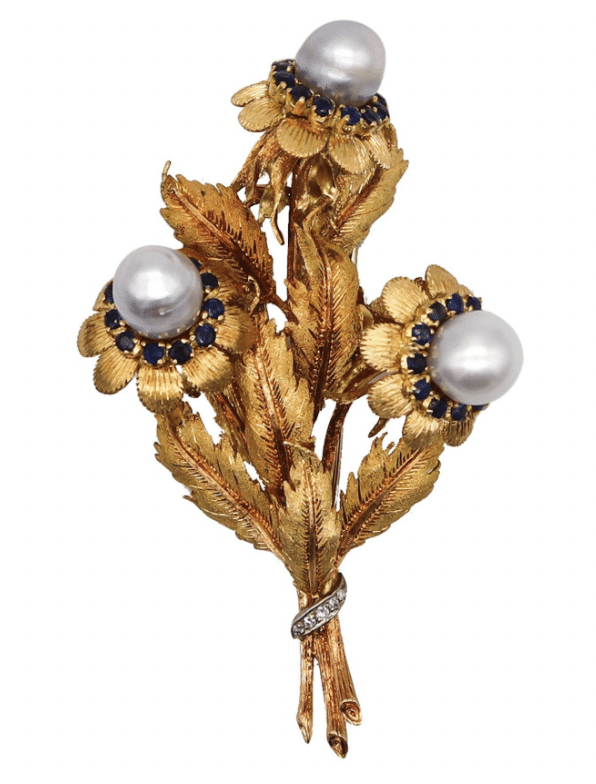

Looking at your 1stDibs assortment, what specific jewel or jewels would you consider to be the most extraordinary examples of nineteen-sixties style? And what about the nineteen seventies?
In the nineteen sixties, we can see extravagant gold pieces using texture, volume and color to make bold new designs. I’d point to a Buccellati brooch and an Olga and Arrigo Finzi brooch in our collection. The nineteen seventies brought darker stones and metals in the pieces, as in our Boucheron rock crystal and onyx necklace and Dinh Van ring, and more geometry and modernism to fashion in general — Pierre Cardin, for example.
Please tell us about a single piece that is highly rare and collectible.
I took a trip to Europe for pleasure, not business. However, I found a wearable sculptural necklace by the famous Italian architect and sculptor Arnaldo Pomodoro. It was crafted with architectural patterns and geometric elements in solid eighteen-karat textured yellow gold with white-gold accents and gemstones, including Burma rubies.


A certain kind of collector is always going to be seduced by the big-name designers. Which ones are you most fond of?
Cartier, which had the young Canadian designer Roger Lucas — who in 1969 was invited by the house to showcase 200 pieces in an exhibition titled “Astrological, Underwater and Geometric” — and Dinh Van. I would also say Boucheron, for the great quality of the workmanship and sometimes avant-garde style. And Tiffany & Co., because it had Jean Schlumberger, Elsa Peretti and Paloma Picasso — all of these artists developed some incredible, unique designs.
I consider Angela Cummings a master designer, certainly the best female designer of the twentieth century. Like Suzanne Belperron before her, she had a superior vision for her time, and there is a legacy of magnificence in each piece of hers that was produced.
